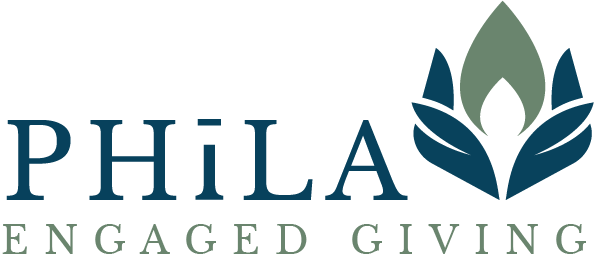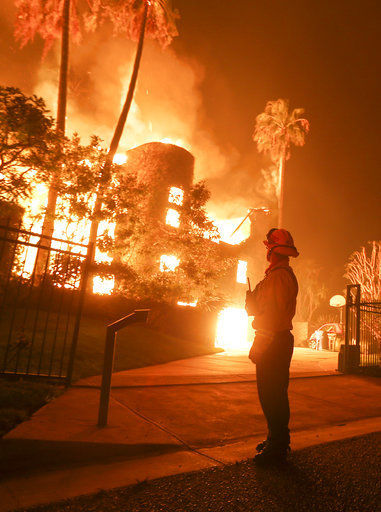Image by Unsplash
A version of this piece was first published by Stephanie Ellis-Smith and Beth McCaw in the Puget Sound Business Journal.
COVID-19 is now a global pandemic and despite the havoc it has already wrought we have yet to experience its greatest impacts. Every one of us must follow guidelines to mitigate the transmission of the virus by staying home unless absolutely necessary to “flatten the curve” of its progression. As a result of these dramatic turns of events, markets are reacting by ushering in a period of intense volatility and erasing much of the gains made over the past three years. Financial advisors tell us not to panic, but we, as advisors in philanthropy, are encouraging individuals and foundations not to pull back on giving, despite portfolio losses.
While we understand the anxiety and fear that uncertain times and rapidly changing circumstances create, we urge everyone who can to lean into leadership and offer extra support to our struggling nonprofit organizations when and where needed. Given the unprecedented level of disruption to businesses and nonprofit organizations, this is not the time to be timid or risk-adverse when it comes to giving.
We have all received the e-mails and calls. Fundraising luncheons, galas, auctions are being cancelled or postponed. With nationwide mandates preventing large gatherings, the spring fundraising season is officially over. For arts and cultural organizations that have had to cancel performances and close their venues for the foreseeable future, these measures cut off their streams of earned revenue as well.
The crisis facing the public sector is not just because of COVID-19. Tough times have been brewing since 2017 with the passage of the Tax Cuts and Jobs Act, which raised the standard deduction to $24,400 for married couples filing jointly, a high threshold for an average family. As a result, nonprofit organizations have already seen a significant drop in contributions, especially from mid-level donors. According to IRS data, Americans itemized $54 billion less in charitable contributions in 2018 alone. With 2020 being a presidential election year, political campaigns will increase the competition for dollars right during year-end fundraising appeals. Even while facing certain reductions in funding and volunteers, nonprofit organizations around the country have redoubled their efforts in communities hardest hit by COVID-19 by providing everything from quality health care to emergency childcare services. They are a critically important component to our national and local response to this pandemic.
We encourage you to act boldly and generously to support our community during this time of extraordinary need. For example, Seattle, where I live, is routinely listed as one of the ten wealthiest cities in the nation by USA Today and has a mean net worth four times the national average according to The Seattle Times. Though we may not feel we can dig deeper to address these needs, we can and we must.
The business community has already mobilized its support, taking care of employees and other businesses alike. Microsoft led the charge to pay their hourly workers even if they were unable to work. Amazon has created a small business support fund of $5 million to support businesses trying to survive with few customers. These are important investments, but we simply cannot afford to overlook the nonprofit sector’s impact on the US economy at the local, state, and national levels. According to the National Council of Nonprofits, nonprofit organizations employ 12.3 million people with payrolls exceeding the construction, transportation, and finance industries. According to this same data set, nonprofit organizations in Washington State account for almost 10% of private employment. Our economic recovery depends on investment in the nonprofit sector.
Now is the time for an all-hands-on-deck approach to community philanthropy. Here’s how we do it.
Foundations, be flexible with your funding. Offer unrestricted general operating support and release restrictions on previously made program or project grants. In such a volatile environment, trust that your grantees know best how to deploy capital most effectively and give them the ability to pivot quickly and to respond to needs as they arise. Offer rapid response grants without asking organizations already over-burdened to write proposals or submit online applications. Consider accelerating future grant payments or grant additional funds. Deploy resources no matter the changes in your endowment or investment portfolio. Why reserve funds for the future when the crisis is now?
Arts patrons, if you bought a ticket to gala, auction or performance, don’t ask for a refund. Keep the ticket and make a commitment to attend the rescheduled event or treat the cost as a donation to the organization.
Donors, give now and check in with the organizations that you support by email or phone. Being a donor means being in a relationship and caring about the well-being of those working on the front lines. Ask if there are ways you can be helpful and be open to the response. Also, be mindful of the burdens on their time. You may not get an immediate reply, but a note showing your support is appreciated. If you have a donor advised fund, now is the time to deploy those resources. Both the Seattle Foundation and Social Justice Fund NW are accepting contributions to their respective COVID-19 response funds. Those are great places to start.
Everyone, give to the fullest extent possible regardless of the tax deductibility of your gift. Often those who are in the greatest need are service and gig-economy workers. Follow Microsoft’s lead and pay hourly workers in your employ even if they are unable to work. Give bigger tips to drivers and delivery people—in cash.
Be an advocate. Now that you know how much the nonprofit sector contributes to our economy, contact your representatives to ensure any government relief or recovery effort specifically includes the nonprofit sector.
We are facing a grave threat to the health and economic stability of individuals across the country. Sadly, the novel Coronavirus is fueling anti-Asian racism, xenophobia, and violence. Be vocal about dispelling racist misconceptions and avoid falling into the trap of blaming “others” for this global pandemic.
We are all partners in this effort. Some are working on the front lines putting themselves and their families at risk. Others are working behind the scenes to help organize or fund the effort. Everyone is needed and everyone has a place. Find your place and get to work. If not now, when?


